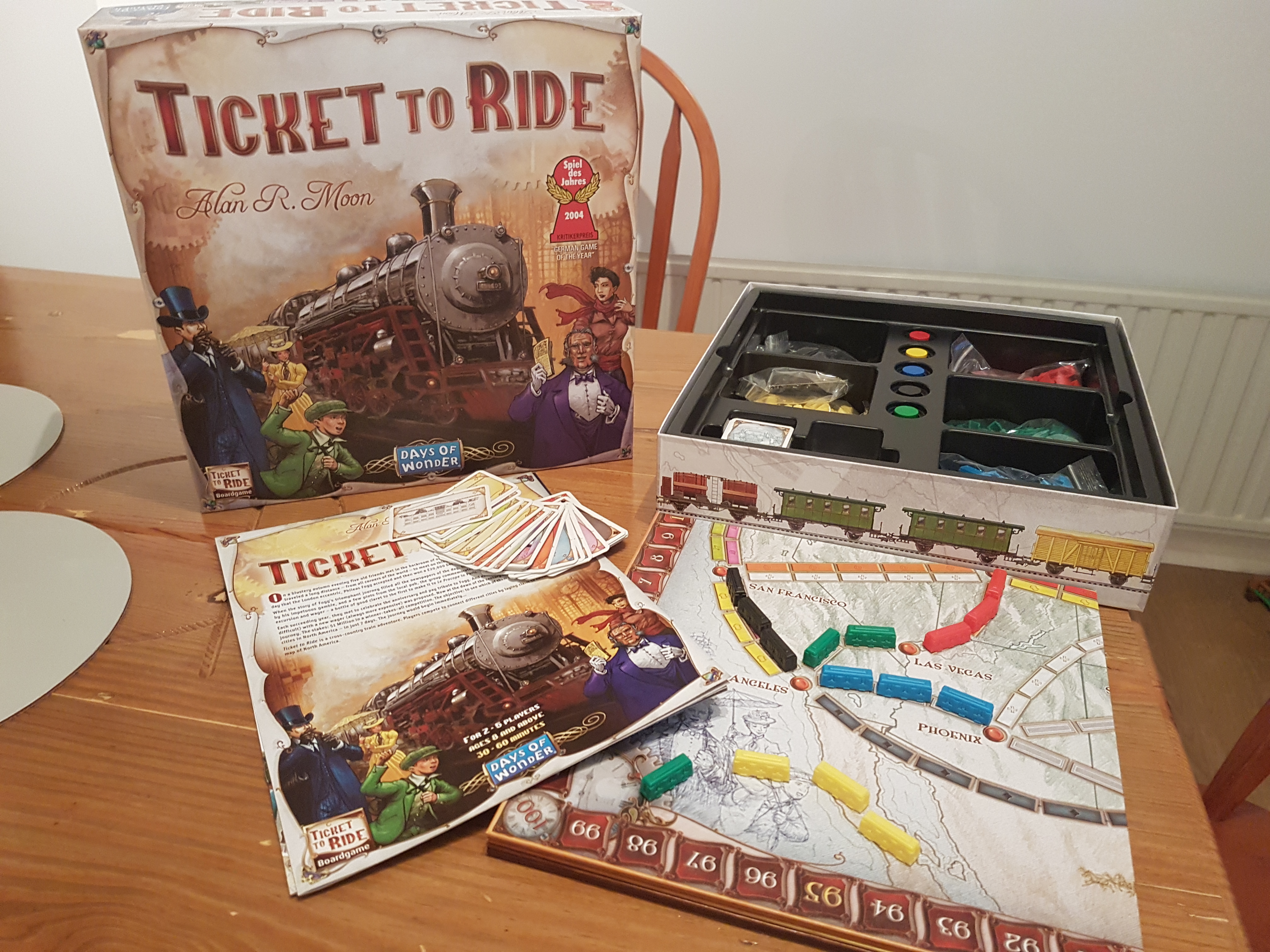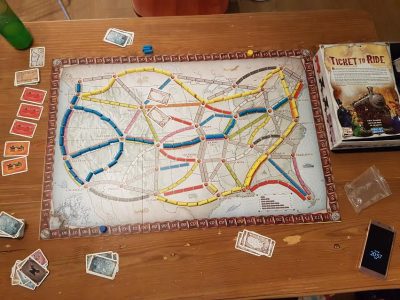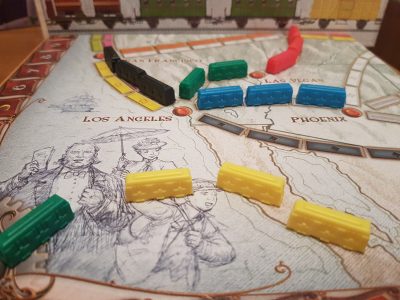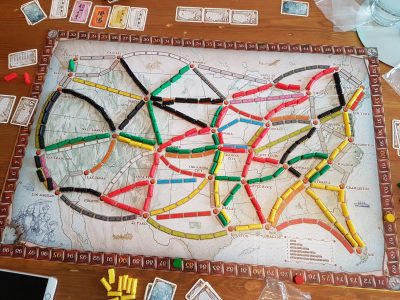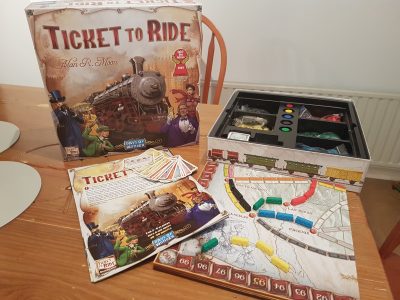Looking past the worldwide mainstream board games like Monopoly, Cluedo (Clue) and Risk and you enter a realm of non-mainstream board games. When you delve into this wonderful realm of incredible board games it won’t take long for you to come across acclaimed designer Alan R. Moon’s Ticket to Ride. It is one of the most popular titles of these non-mainstream games, to the extent it could almost break through to becoming mainstream at any point! It is a game which has spawned an entire series of hit board games with maps based around the world.
This time we are looking at the original Ticket to Ride, which is based on a map of the United States of America. This can be considered to be one of the two base games of the series, alongside Ticket to Ride: Europe, which additional map packs can be brought for, but let’s not get ahead of ourselves and focus on the game itself!
At its core Ticket to Ride is a card collection and train placement game. Players aim to obtain sets of coloured train cards, enabling them to claim train routes across the board. At the beginning of the game players are dealt random Destination Tickets, of which players must keep at least two. These give players long journeys across the board they must complete to score big at the end of the game. Failing to do so leads to penalty point deductions. Thus, some routes on the board soon become hotly contested and so begins the competitive nature of Ticket to Ride.
The design on this Ticket board sees a number of long routes around the edges of the map along Canada and down the West coast of the United States. There are a lot of double routes, which in a 4/5 player game allows two players to claim a route between two cities, towards the centre of the map. This creates many potential paths through the middle of the US. To increase this a number of these routes are grey in colour. This is one of the core gameplay mechanics of the board game. As suggested to claim a route you must have a set of colour cards, matching the colour of the route on the board with the number of cards depends on the length of the route. Grey routes can be claimed with a set of any colour. This helps the game flow even when players do not have the colours they need for other routes. Opening up the potential for players to work around routes claimed by other players a little easier.
I have been able to deploy Ticket to Ride when my D&D group is around, when regular board game players are up for a relatively quick game of something (30 – 40 minutes) and with family members whom normally stick to the likes of Monopoly. Each of these games have played out slight differently. It seems the more hardcore the board gamers around a table, the more likely cutthroat situations of blocking routes will commence. This is despite the issue that it is potentially wasting the blocking person’s trains simply to disrupt the game of another.
When playing with family members or more casual players you’ll start to see longer trains snaking across the map of the United States of America. Often intersecting but not blocking. This is where the endearing nature of Ticket to Ride comes in. Placing the small carriage pieces on the board and seeing the long routes linking up across the map just has something special about it.
The components strengthen the theme of the title, as well as making the game extremely attractive. The train pieces themselves is what the game revolves around. They are robustly built so that the pieces will still be the same a hundred plays from now, whilst having a decent amount of character. The game board is of a decent size with a good amount of spacing for the awesome trains pieces to, even on the short double routes in the centre of the board, not feel squeezed in.
My only issue with the components is the cards, in particular the card size. The artwork of the carriages is spot on. The distinctive colour used adds plenty of vibrancy to the game and I particularly like the inclusion of symbols for each colour. This is to aid those with colour blindness. This all being said the cards are small in size and are not as easy to hold a big hand of. Especially, in comparison to the standard playing card size used in the Ticket to Ride: Europe base game.
One of the reasons that Ticket to Ride can be played with such a wide variety of people is because the rules are kept simple, yet they allow for both player choice and light strategy. The rulebook itself does a great job of laying out the concepts of the game, how all the scoring works and the three possible actions players can take on a given turn. This allows new players to instantly pick the game up with only some limited occasions when you need to return to the rules. Past a few plays and the rulebook won’t even leave the box.
Ticket to Ride is the original of the series. Each expansion available and the Ticket to Ride: Europe base game adds in new rules in, so the experience you’ll get playing Ticket to Ride is the core game. For those whom have played before the additional rules, such as tunnels and stations, of other Ticket variants do add to the gameplay. However, this version is the simplest to play and learn so it is ideal for bring new players into both the series and the realm of board games beyond Monopoly.
Overall, Ticket to Ride is great fun to play and it is a good thing the components have a high build quality as I can see the game being played a lot. The game is for 2 – 5 players. Personally, I’d suggest 3 or 4 players. This balances out the length of the game with the possibility of routes intersecting and routes being both purposely and accidentally blocked. This should be one of the games in every board game players’ collection. Ticket to Ride is a great combination of a game that is easy to play, with plenty of replayability and no matter how many times you’ve played it will always keep its place on your board game shelf!

